 JEFF ZURSCHMEIDE
.
October 26, 2022
.
All Feature Vehicles
JEFF ZURSCHMEIDE
.
October 26, 2022
.
All Feature Vehicles
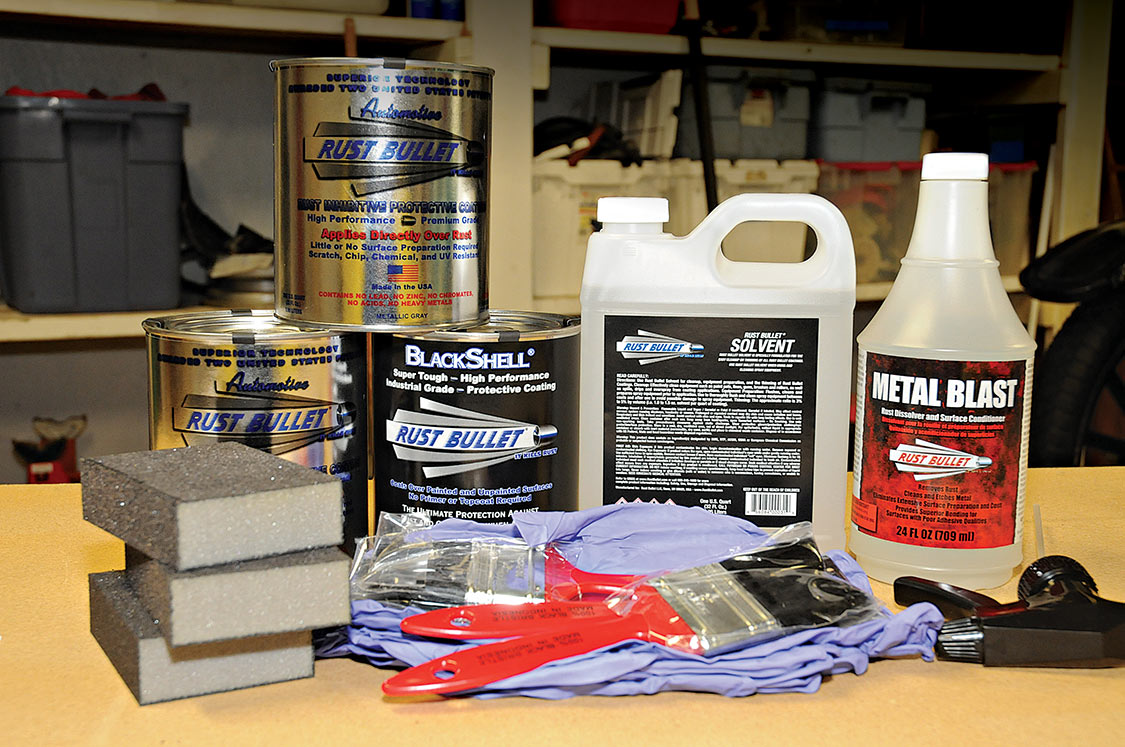
The Rust Bullet Automotive Undercarriage Kit has everything you need to coat the entire underside of a car, or a whole lot of panels and parts. This package includes the Metal Blast, metallic gray undercoat, and a can of top coat in your choice of color.
For our product review we used a 1969 Corvette Stingray. Nothing special, just a small-block with an automatic, but it’s ours and we love it. Last year, we got the basic 350 engine sorted out to the tune of 240 RWHP and 300 lb.-ft. of torque.
This year, the project is to get the tired TH400 slush box out of there and replace it with a more interesting Muncie 4-speed. Lucky for us, Chevy makes that swap comparatively easy. You just have to change some panels on the firewall, replace the pedal assembly, bolt on the brackets for the clutch linkage and then do all the greasy work to install the new trans. We’ll cover the rest of that another day, but what has us occupied today is getting the conversion parts for the firewall and chassis ready to install.

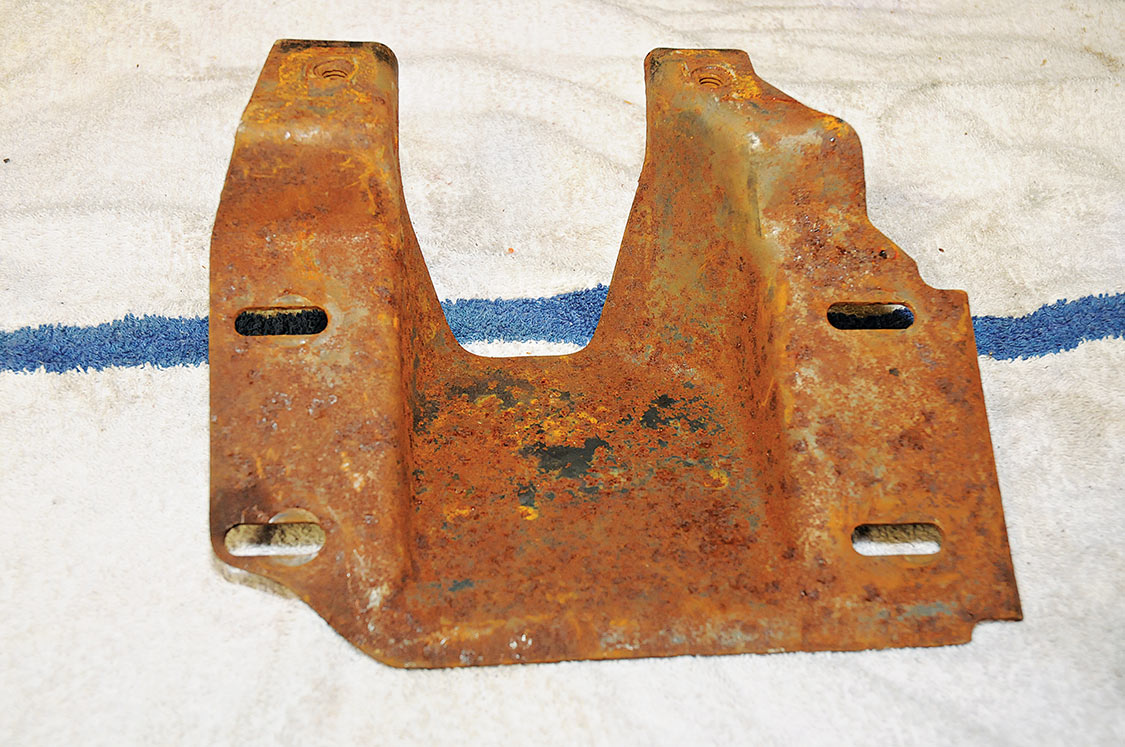
We sourced our conversion kit from a Corvette junkyard and like most junkyard parts, the plates and brackets are all covered with a good layer of surface rust. So we started looking at what to do about that. Spray paint was rejected out of hand. We want to do this job only once, and we need it to last. We strongly considered powder coat, but we needed to neutralize any remaining rust. Then we looked at epoxies and other sealant coating products, and that’s where we encountered Rust Bullet. This product has multiple patents and uses a different approach from anything else on the market, so we decided to give it a try. The results are spectacular and unlike powder coat, you don’t need any special equipment to get great results.
Rust Bullet is a polyurethane-based coating that neutralizes rust and seals metal to prevent new rust from forming. That’s the core thing you need to know. Of course, there’s more to it than that. We’re product nerds, so we read safety data sheets.
If you get the automotive undercarriage kit, Rust Bullet comes with a jug of metal prep solution to dissolve rust, two cans of automotive metallic gray base coat, and a can of black topcoat paint, and the solvent you use as paint thinner. Each of these components has its own custom attributes that make Rust Bullet different from other coatings.
The Metal Blast cleaner uses phosphoric acid to dissolve surface rust, and has some detergents and corrosion inhibitors to help it clean metal effectively. The best thing about this stuff is that cleanup and neutralization happens with just plain warm water.
The results are spectacular and unlike powder coat, you don’t need any special equipment to get great results.
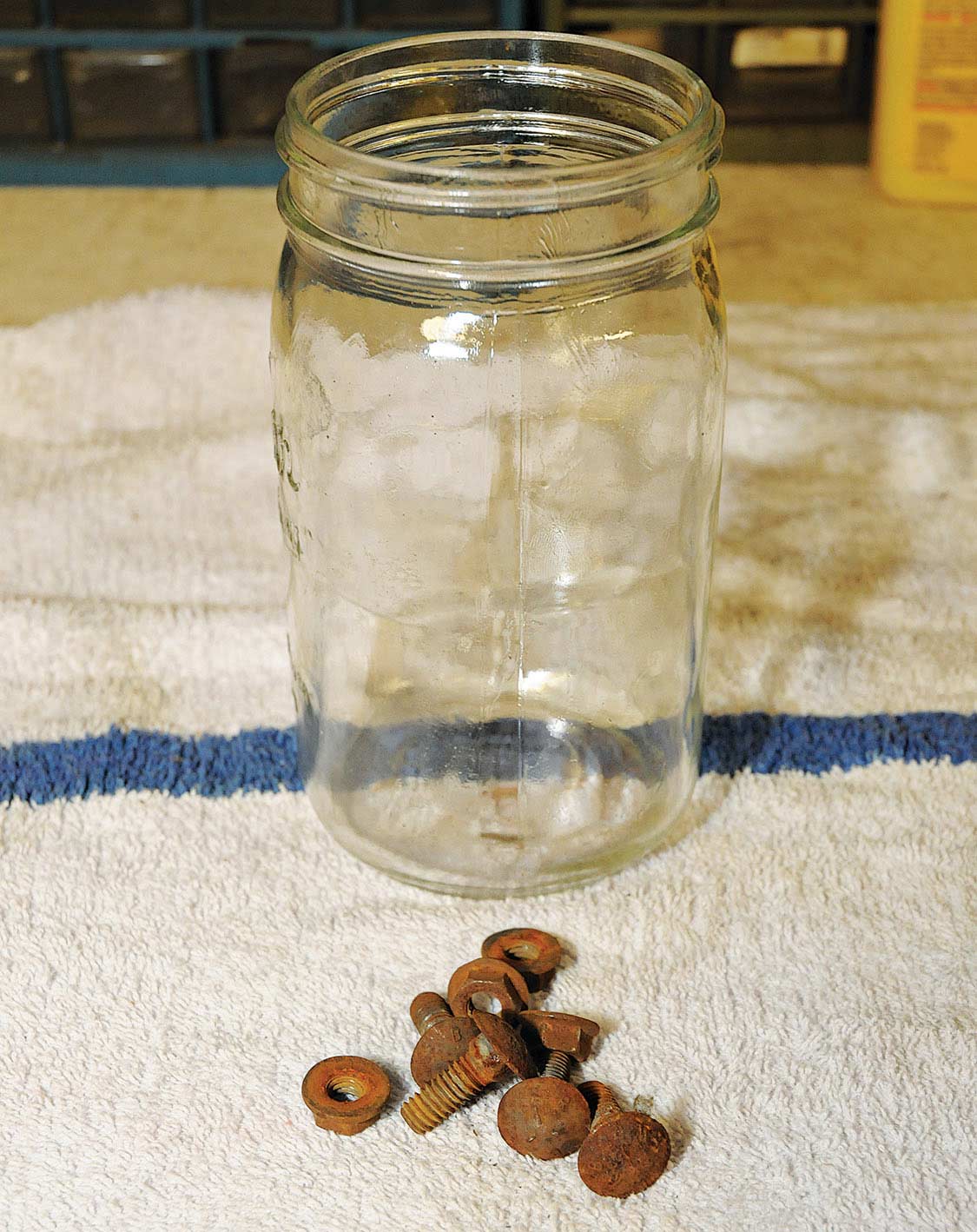
Rust Bullet Automotive in metallic gray is a polyurethane paint that is activated by a catalyzing chemical related to the stuff used to make crazy glue, but this particular catalyst is used to harden industrial polyurethane. Rust Bullet automotive paint also contains aluminum, which is key to its function, and some special high-grade solvents. The resin penetrates the remaining rust on the metal and sucks the water right out of the oxidized steel. The water/moisture actually cures Rust Bullet into an armor-tough finish. By dehydrating the steel and then encapsulating it in polyurethane, no new oxygen can get to the metal to create any more rust. What you end up with in the base coat is a hard polyurethane shell that seals your metal parts against the elements.
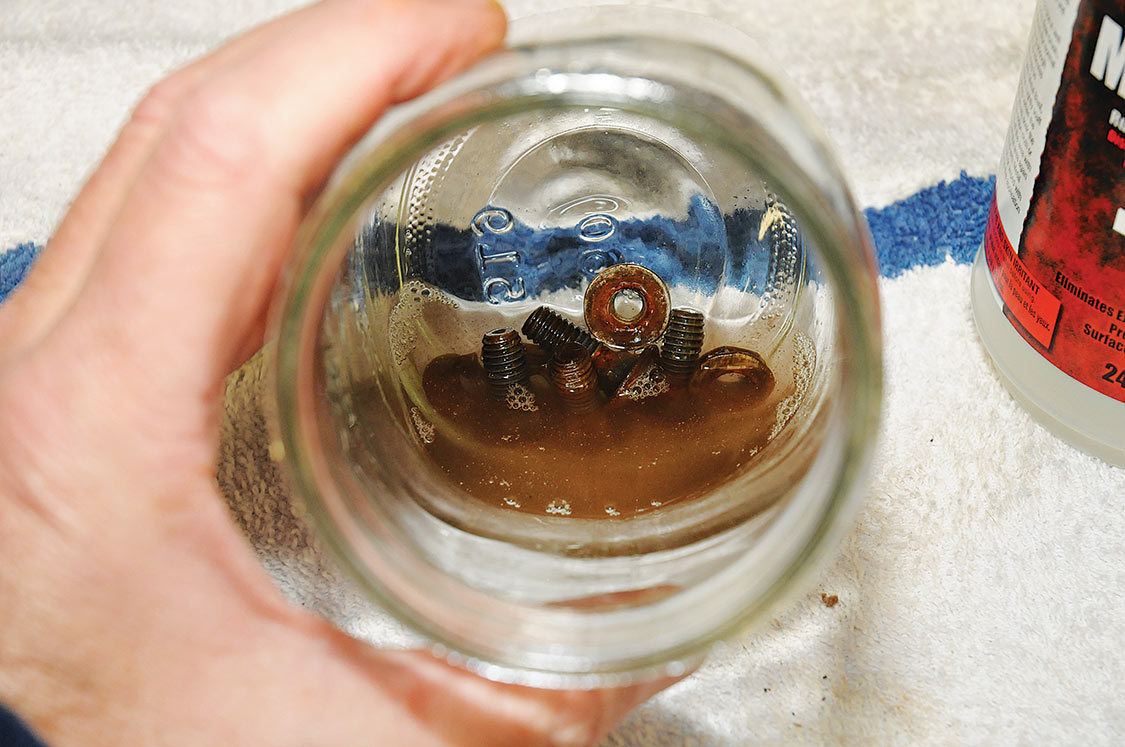
The BlackShell is a different kind of paint designed specifically for surface coating. This paint uses cellulose acetate butyrate, which is a tough plastic with extra ultraviolet resistance and high-surface gloss. This material is catalyzed by another variant of the crazy glue family of chemicals. Put them together and you get a great topcoat that lasts through all kinds of abuse.
To finish this chemistry lesson, it’s almost as important to note what Rust Bullet does not contain. Rust Bullet has no zinc, no lead, no chromates and no heavy metals of any kind. That’s key, because it makes Rust Bullet one of the safest and environmentally friendly products you can use.
So, here’s how it all works together. You can follow the procedure with the photos to see our actual garage results on one particularly rusty panel and some fasteners.
The Automotive Undercarriage kit from Rust Bullet includes everything you need for a project, up to and including a whole ladder frame for a car. The kit comes with two quarts of the metallic gray paint, one quart of the BlackShell paint, a bottle of Metal Blast rust dissolver, a bottle of solvent thinner, three scrub sponges, three paintbrushes and even a supply of chemical-resistant gloves. All you need is a bucket of warm water and a reasonably warm, dry, well-ventilated place to work. Metal Blast and Rust Bullet products do throw off some fumes.
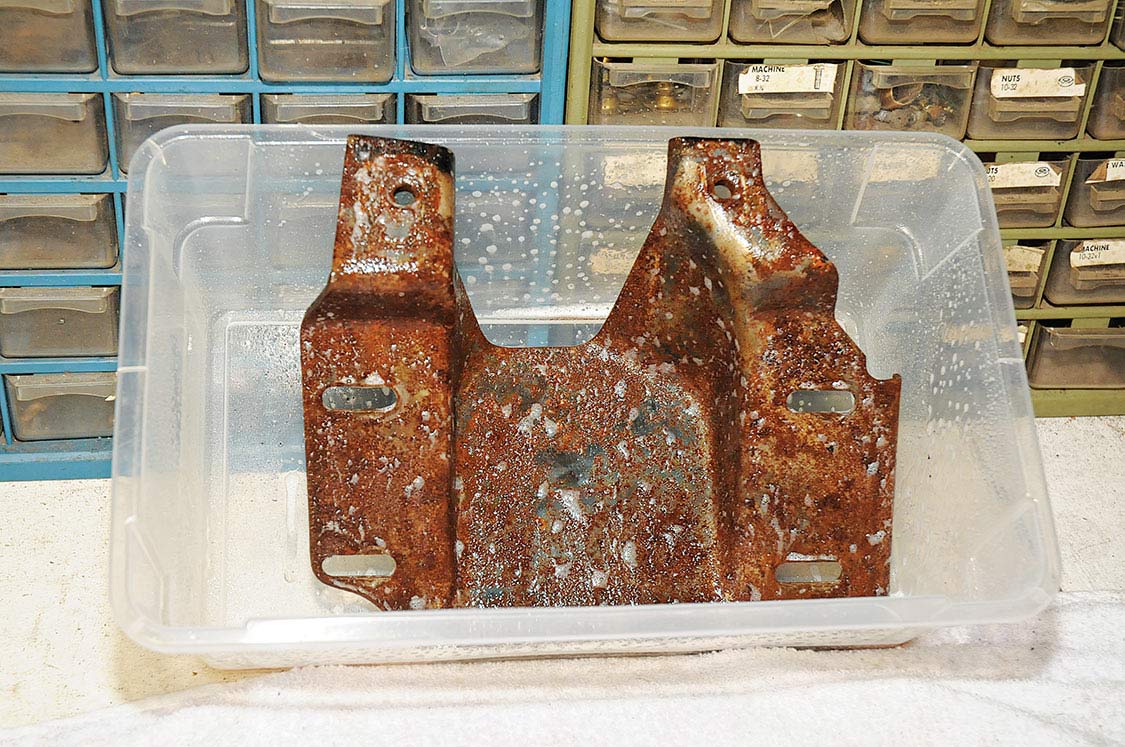
The first thing you need to do is to get rid of the powdery or flaky rust on the surface of the metal. You can stick paint to the rust but if the rust won’t stick to the underlying metal, any kind of coating will come off as the rust flakes off. So start by spraying on the Metal Blast cleaner, then let it work for anywhere from 20 minutes to a couple of hours. Give it some more applications and scrub the part to help loosen the surface rust and any other grime. Then rinse with water to check your results.
When your part is completely dry, you can stir up the can of Rust Bullet Automotive and brush it onto the metal surface. You can spray it on if you have that kind of equipment, but brushing it on works perfectly well. You don’t have to use too much, just enough to give the part a good coating.
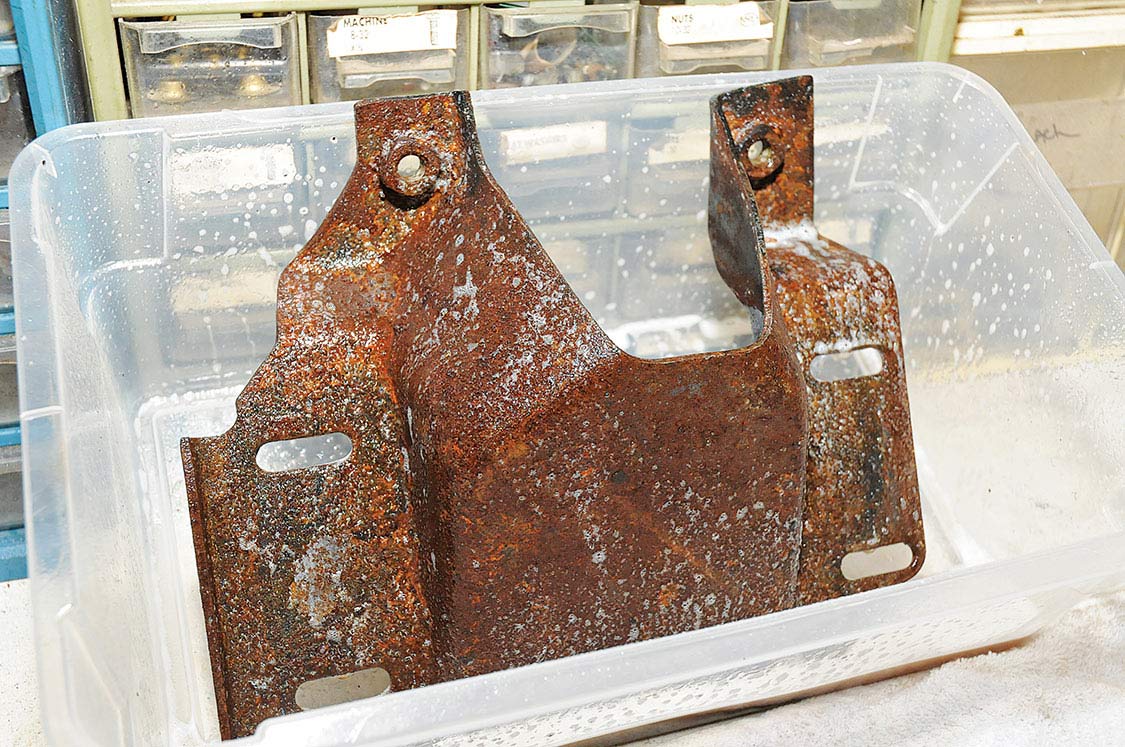
The aluminum in the paint helps to create the metallic color and fill in any pits or flaws in the metal, and helps to make the resulting coating even stronger. You need two coats of the metallic gray base coat, applied about four hours apart if temperatures are normal (60–80 degrees) for indoor work.
When the base coats are well dried, you can apply the BlackShell topcoat as an option. Rust Bullet doesn’t strictly need the black topcoat, but the BlackShell looks more correct for ladder frames and suspension components, yielding a gloss black finish that is resistant to moisture, abuse and to UV if it’s subject to direct sunlight. The BlackShell topcoat goes on with the brush just like the base coats.

TIP: Hit stubborn areas or nooks and crannies with a wire brush or wire wheel to get them as free as possible of loose rust.
We finished our panels and brackets in a weekend, allowing plenty of drying time between coats. We took our time and coated both sides of each part, and used the Metal Blast in a glass mason jar to remove rust from our fasteners while we were at it. We didn’t use a 10th of the paint and Metal Blast that came in our kit, so we’re already thinking of pulling some suspension components and giving them the Rust Bullet treatment. Then there’s the car-hauling trailer, then the boat trailer, you get the idea.
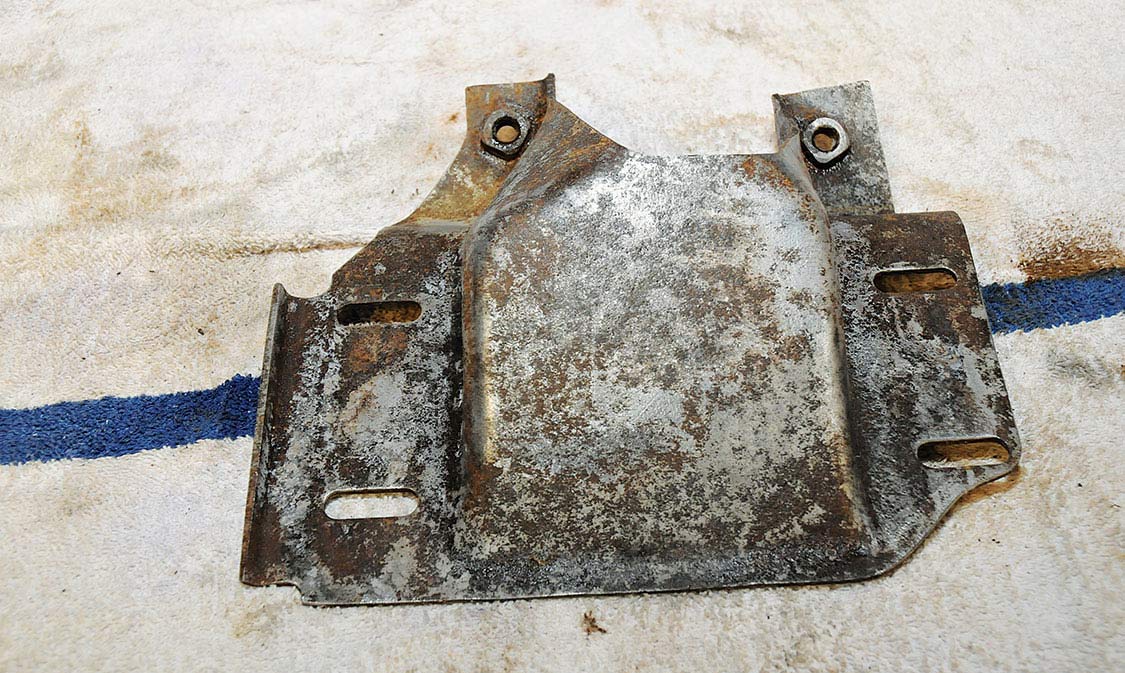
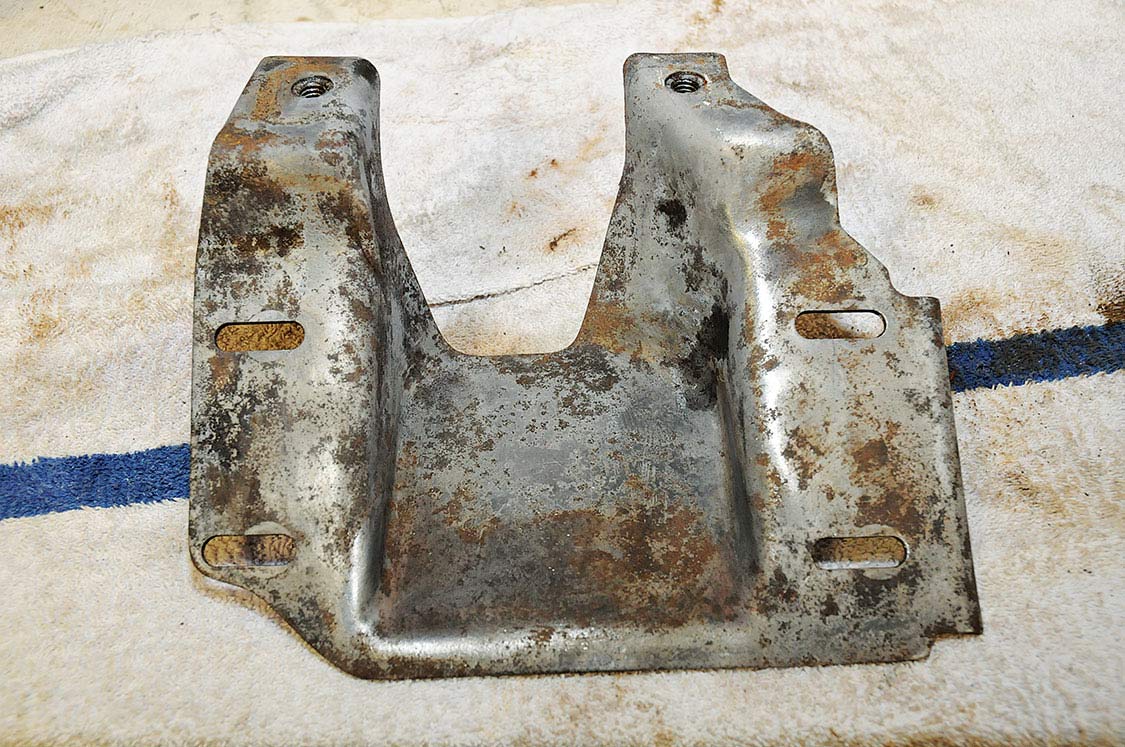
You can pick up the Automotive Undercarriage kit direct from Rust Bullet for $149.99. If you just have some panels and brackets to do, you might choose the Rust Bullet Automotive Double Shot for just $22.99. The Double Shot gives you two 4-ounce cans of the Metallic base coat, plus gloves and brushes. Big-time users can get the Truck Kit with three quarts of Automotive base coat and two quarts of BlackShell, plus two jugs of Metal Blast for $239.99. You can also buy Metal Blast by itself. A 24-ounce jug will set you back $19.99.
You can order all Rust Bullet products directly from the manufacturer through their website (www.rustbullet.com) and get free shipping on most orders over $75. The bottom line is that we recommend Rust Bullet products. We use it on our own cars, and that says it all.
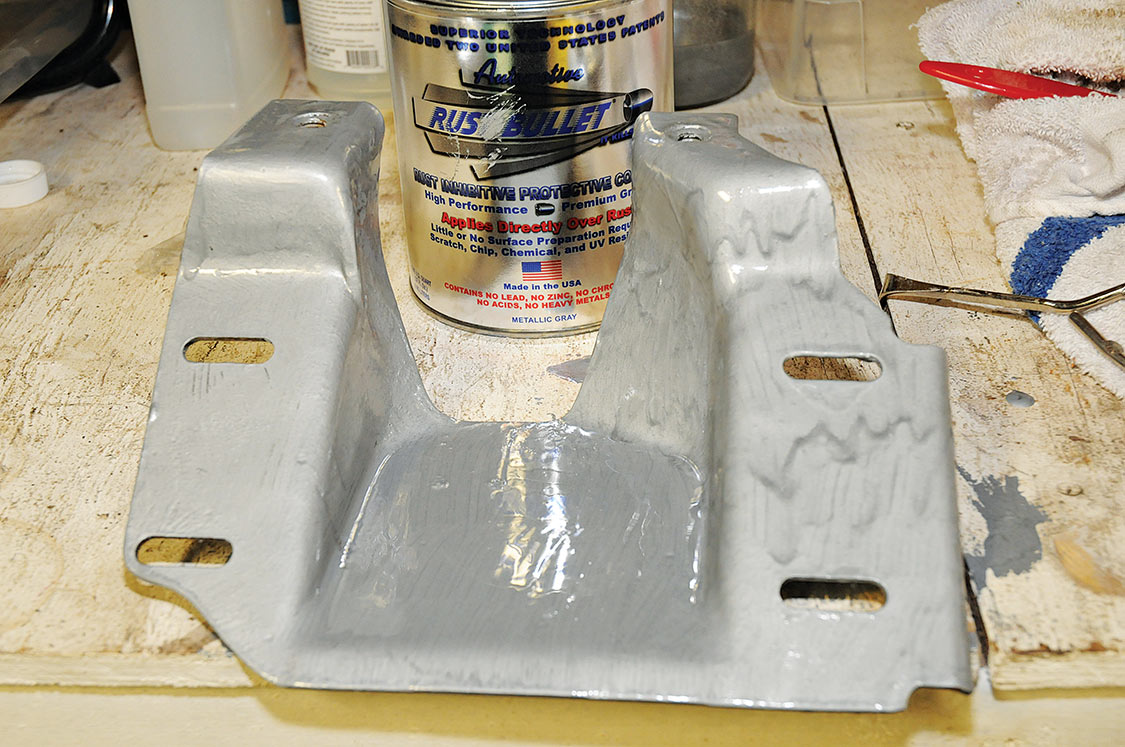
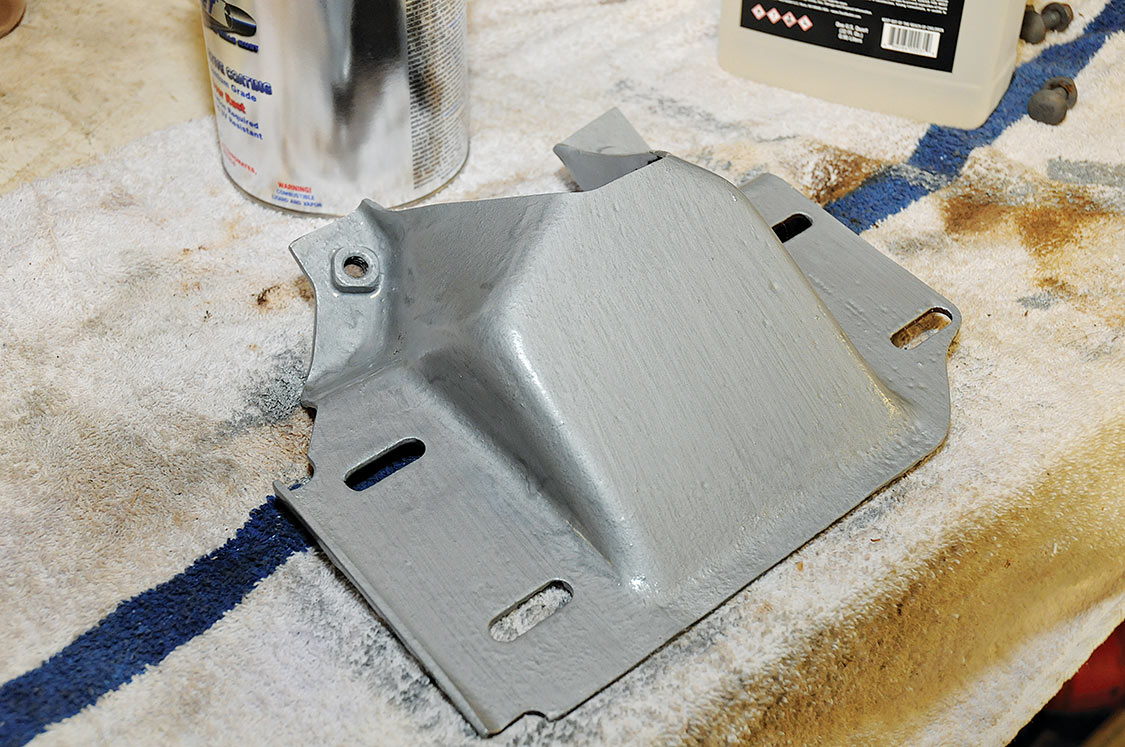
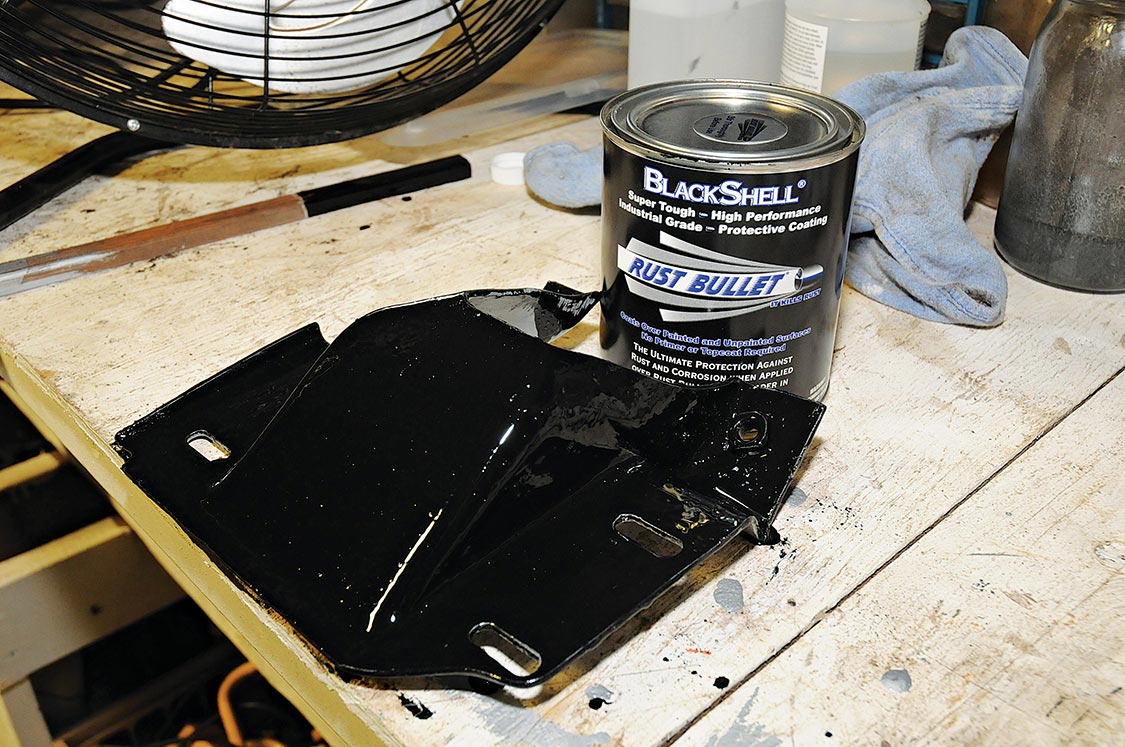
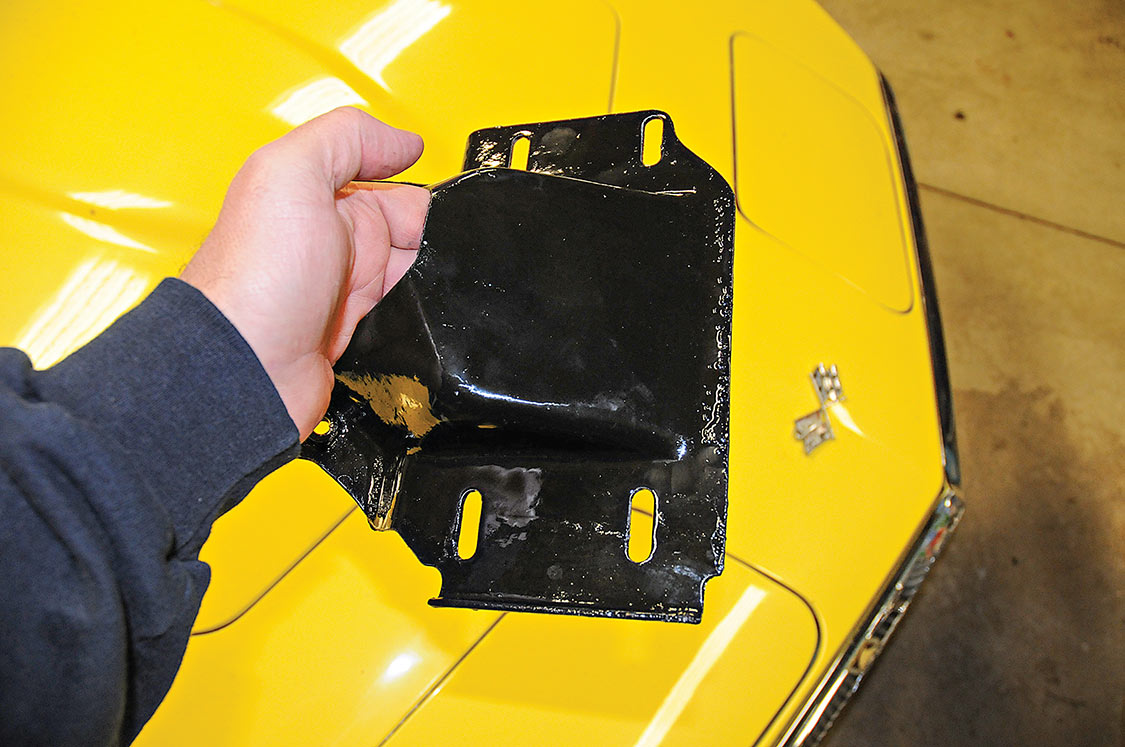
TIP: When it’s fully cured, Rust Bullet has amazing heat resistance—up to 314 degrees Fahrenheit continuously and up to 617 degrees Fahrenheit for up to 72 hours at a time. This means you can use it in engine bays.
We use cookies to enhance your browsing experience, serve personalized ads or content, and analyze our traffic. By clicking "Accept All", you consent to our use of cookies. Visit our Cookie Policy for more info.
Notifications
Share Link